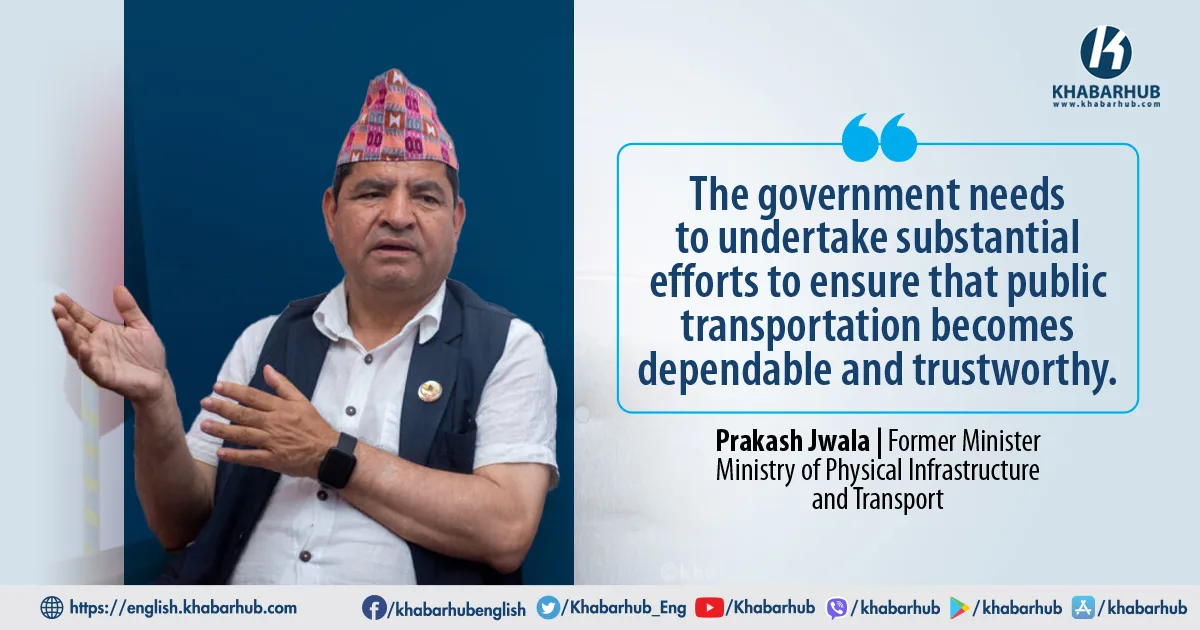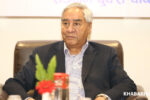KATHMANDU: The Department of Transport Management is currently unable to effectively issue smart driver’s licenses due to an ongoing dispute between involved companies.
This issue has left common citizens waiting for months, enduring long queues without obtaining their licenses.
The Ministry of Physical Infrastructure and Transport Management need to take responsibility to resolve this situation promptly.
Despite the Department’s ability to provide licenses within a day for specific needs like those studying abroad or joining the peacekeeping force, ordinary citizens continue to face significant delays.
In an interview with Khabarhub, former Minister of Physical Infrastructure and Transport, Prakash Jwala, highlighted the widespread frustration saying, “Common citizens are suffering because they are unable to obtain smart licenses. Even when the Minister himself was involved, the issue remained unresolved!”
The tender process for driver’s licenses, including embossed number plates, has been finalized.
However, conflicts arose among the three companies awarded the license contract, primarily concerning the allocation of responsibilities for printers, cards, and software integration.
Presently, SSP Madras Security Printer Press possesses the necessary software and printing machinery for licenses, while another company holds the cards.
This lack of coordination between companies has resulted in significant operational challenges.
Moreover, the absence of a chip reading machine specifically designed for smart licenses has exacerbated the situation.
Compounding these issues, there has been a failure in the division of responsibilities among the departments and provinces, particularly in the management of resources across the seven provinces.
Is it a problem when the province governments did not take responsibility?
Absolutely, it’s a significant issue. There was already a contract in place, but unfortunately, there was a severe lack of coordination among the companies involved.
When one company provided the card, the other failed to deliver the necessary software. It’s a classic case of the left hand not knowing what the right hand is doing!
You mentioned disputes and infighting between the companies. How did that affect the situation?
The internal conflicts among the companies made it impossible for us to implement a cohesive system.
During my tenure as Minister, we struggled to obtain both the system and the cards.
Moreover, inadequate manpower to rectify software issues compounded our challenges.
The competitive nature between companies further exacerbated these problems, including difficulties in acquiring necessary equipment.
You said you tried to solve these issues. What steps did you take?
We engaged in numerous discussions with both the departments and the companies involved.
We emphasized the need for collaboration and interaction. Payments were made to ensure progress, and we eventually received 1.2 million cards from the parent company.
Despite these efforts, the Department’s coordination with the companies remained a persistent issue.
What is the way forward to resolve this ongoing problem?
One solution is for the provinces to take initiative where they can manage the procurement of cards and printers themselves.
Alternatively, the Department of Transportation should issue a new tender, procure new printers and cards independently, and oversee the printing process.
Implementing a temporary one-year license could also alleviate immediate concerns, particularly for those going abroad.
Furthermore, integrating the driving license with the national identity card could streamline the process effectively.
There has been consensus on this approach, which would eliminate the need for a separate license card.
Additionally, there should be a provision for the Federal Government to oversee the licensing process nationwide, ensuring uniformity in standards and procedures.
However, to effectively tackle these challenges, the government must allocate a dedicated budget in the upcoming fiscal year.
Without such proactive measures, the issues plaguing the licensing system are unlikely to be resolved satisfactorily.
If the smart license issue isn’t promptly resolved, the public will continue to suffer. What actions should be taken now?
The responsible agency must swiftly process the pending work, ensuring immediate printing and distribution.
Subsequently, provinces capable of managing their own resources should proceed, while others should prompt the Union Government to quickly tender for new cards and printers.
This tender should prioritize acquiring new equipment for printing and distributing licenses without delay.
Long-term solutions should explore integrating driver’s licenses into national identity cards, eliminating the need for a separate license card. I urge subordinate bodies to adopt these three options swiftly.
You also engaged with physical infrastructure ministers and secretaries from all seven provinces. Wasn’t there a discussion about delegating authority to the provinces at that time?
Yes, there was. However, it appeared that the provinces may not have been fully prepared to shoulder this responsibility. It’s imperative that provinces take ownership.
We urged all provinces to allocate budgets accordingly. The goal was to standardize driving licenses across all provinces, with final approval resting with the Department.
There’s a consensus that the system should be centrally controlled to ensure uniformity.
We convened meetings with ministers and secretaries numerous times to address both immediate and long-term challenges. We’ve also consulted various stakeholders to explore solutions.
If the current government and ministers follow through on previous decisions, the licensing issue can be resolved. Completing the pending tasks will automatically alleviate the vehicle licensing problem.
Another point to discuss: The express bus service was launched in Kathmandu. However, the impact doesn’t seem very pronounced, does it?
Initially, we faced significant challenges. It was a tough start, but we persevered through the difficulties. Our goal was to establish a reliable transportation system to enhance public comfort.
We initiated the service from Ratnapark to Surya Binayak in Bhaktapur. Despite the initial hurdles, it has been progressing satisfactorily.
Our objective is to expand this service to more areas within Kathmandu.
The government needs to undertake substantial efforts to ensure that public transportation becomes dependable and trustworthy.









Comment